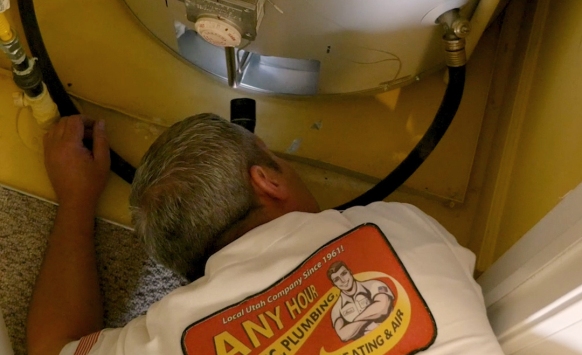Your Water Heater Should Be Heating Water. Is It Heating Sediment Instead?
Just like every other appliance, you need to maintain your water heater for it to run right. Unlike other appliances, it’s hard to see how bad it might need it. That’s because everything that needs to be maintained is hidden inside the machine. Of course, that means that since most people can’t see what’s happening, most people don’t think about fixing it.
But ignoring a water heater doesn’t mean it stops working. And while it’s working, it’s building up sand, minerals, and other sediments that will destroy it with enough time. This post is going to talk about how to get rid of that sediment. When you add some other maintenance we’ll mention, you can keep your water heater working for decades.

Why Do You Need to Maintain Your Water Heater?
When water comes from the city, it’s filled with dirt, sand, and minerals from the water supply. It flows into your water heater and sits there until you turn on the hot water somewhere. While the water waits for you to use it, the sand and minerals sink to the bottom of your water heater tank. Over time enough can build up that you might have a water heater that’s 25% full of sediment.
That sediment acts like an insulator and makes your water heater have to heat it before it can heat the water. And once it finally does heat through it, the sediment floats up and the still cold water replaces it. That shocks the hot metal sides of the tank, weakening them and causing a large leak. On top of that, the minerals in the sediment layer can start to eat away at the metal, weakening it even faster. With all that going on, a water heater that’s not maintained might last about 6-8 years when it should last 15-20.
What is a Water Heater Flush?
A water heater flush is the first step in reaching that 15-20 year lifespan. You wash out most of that sediment by letting the water rush out a spigot at the bottom of your water heater. Because the water is under pressure, it pulls the sand, dirt, and minerals with it. Flushing your water heater once a year can help it run at peak efficiency for a much longer time.
What is an Anode Rod?
The manufacturers knew that the minerals in the water would attack the metal sides of the tank. Because of that, they installed a metal rod to get attacked first. That sacrificial rod is called an anode rod. One anode rod will usually last for 2-3 years before you need to replace it, depending on the minerals in your water. Once it’s eaten away, though, the minerals will go back to eating at the metal tank. That’s why it’s wise to check the anode rod every year when you flush your water heater.
Who Should be Working on Your Water Heater Maintenance?
If you feel comfortable attaching a hose to a spigot, you should be able to flush your water heater yourself. We even have a video here showing you how to do it. As always you should call a professional if you decide you aren’t comfortable with the project.
The anode rod can be much more challenging. You need special tools to remove it, and a specific preparation process before you can get it out. Because of that, you’ll want to find a plumber you trust to check or replace the anode rod.
For more on water heater maintenance, check out this episode of our “In The House” podcast. If you’re in the Utah market and want to flush your water heater, Any Hour Services would be happy to help. You can give us a call or schedule an appointment online.
Join our email list to get access to weekly emails with helpful videos, educational articles, and DIY home maintenance guides.
Other helpful resourses:
🛠️
DIY videos from Any Hour Services
🎙️
Listen to Our Podcast
- In the House
🎥
Watch our VLOG - Along For The Ride
Author: Nathanael Stuver
Copyright © 2023 by Any Hour Services
Jul 21st 2023

